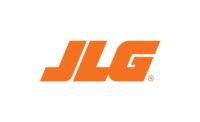Large crowds, plus the elements, can make any sport played in a stadium that much more exciting. And while stadiums are returning to full capacity after COVID-19 restricted fans from attending most games, now is an ideal time for facility managers and owners to plan and perform maintenance on these important structures.
Most sports stadiums in the United States are made up of reinforced concrete with steel seating supports and railing. Unfortunately, an even more universal characteristic is their openness and vulnerability to the elements — in addition to the wear and tear they receive from fans. All of these forces combine and take their toll on the structural integrity of a stadium.
Without routine maintenance, corrosion, movement and reoccurring freeze and thaw cycles will cause the concrete structures to crack, spall and disintegrate. Water seeping through surface cracks will cause severe structural damage. Seats will crack and weather and steel supports will rust causing discoloration and fracturing of surrounding concrete.
With over a century of service, Western Specialty Contractors has restored and protected a number of sports stadiums across the country, including the University of Notre Dame Football Stadium in South Bend, Indiana; Lindenwood Stadium in Belleville, Illinois; H.A. Chapman Stadium at the University of Tulsa, Oklahoma; Miller Park in Milwaukee, Wisconsin and Sports Authority Field at Mile High in Denver, Colorado.
“Western’s experts work with stadium owners and facility managers to analyze the type and extent of any damage present and recommend cost-effective, remedial measures to protect and extend the life of the facility and keep fans safe,” said Crystal Moyer, Director National Accounts/Marketing at Western Specialty Contractors. “Cutting-edge, long-wearing materials are often recommended to restore a stadium and protect it from future damage.”
Here are some examples of Western’s stadium work over the years:
University of Notre Dame Football Stadium
As the college football season approached, Western Specialty Contractors was contacted by the university to provide a new traffic coating system on all the concourses, concession stands, bathrooms and pedestrian ramps around the stadium. Constructed in 1930, more than 80,000 fans pack the historic stadium each season to cheer on the Fighting Irish.
The project called for a fast track schedule which included cleaning, preparing and recoating 270,000 square feet of traffic coating membrane. The project had to be completed in just six weeks to have the stadium ready for opening day. Western crews were able to meet the tight deadline by working closely with the stadium operations staff.
H.A. Chapman Stadium
Western Specialty Contractors was contracted to complete work on the new sky box addition at Chapman Stadium at the University of Tulsa. Western caulked approximately 8,000 lineal feet of control joints and window perimeters. The stadium bowl also had a face lift, adding new seats and cast stone walls which were also caulked. During the project, Western was asked to power wash the existing concrete wall and remove the old paint.
The Chapman Stadium project was fast paced and took a large amount of coordination between the subcontractors and general contractor. The work was completed before the start of the football season.
Miller Park
Western Specialty Contractors was involved in the construction of Miller Park in Milwaukee, the new home of the Brewers. Western’s scope of work was to provide a waterproof traffic coating system on one of the five concourses. The area totaled 100,000 square feet.
In addition to the coating work, a positive drainage system was installed. Imperfections to the concrete surface areas, such as scaling, gouges, scrapes and cracks were also addressed. The application of the traffic coating system was completed in four phases and in time for opening day of the Brewers season.





Report Abusive Comment